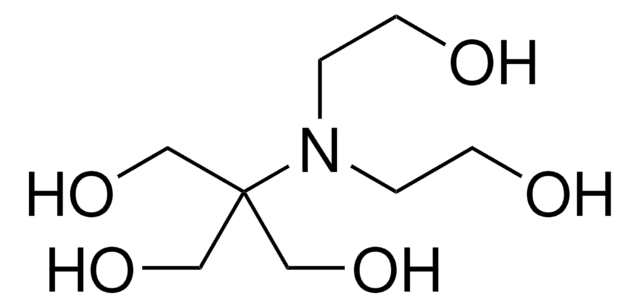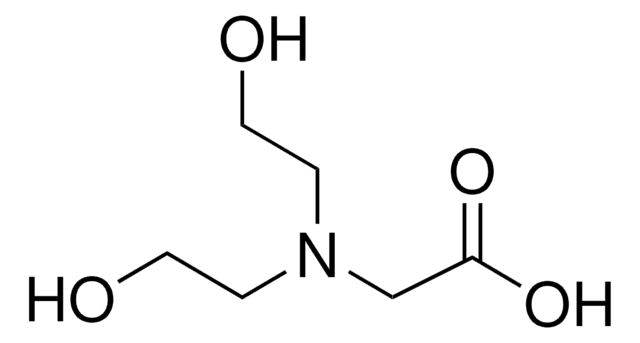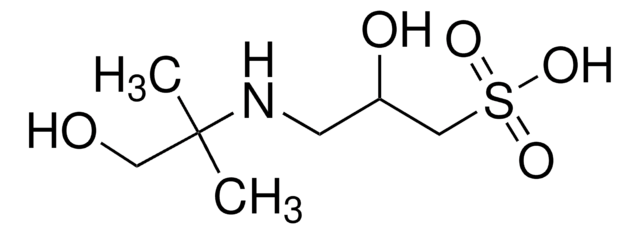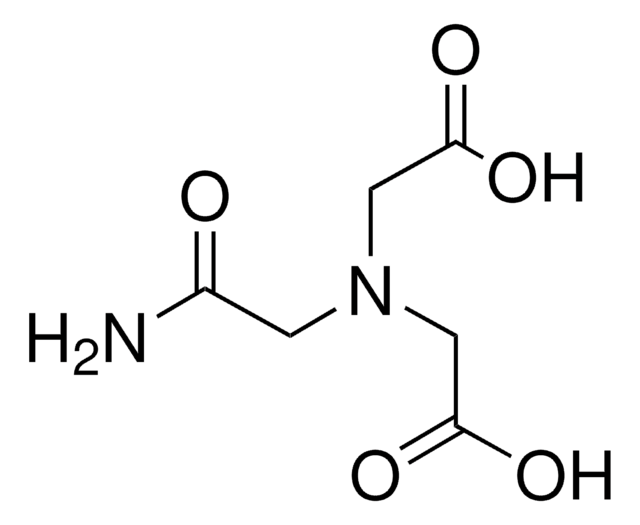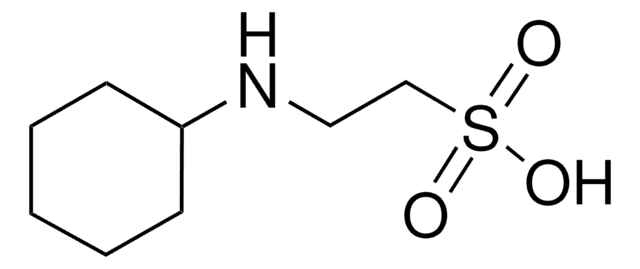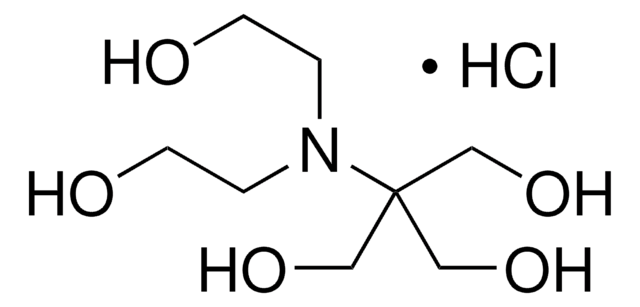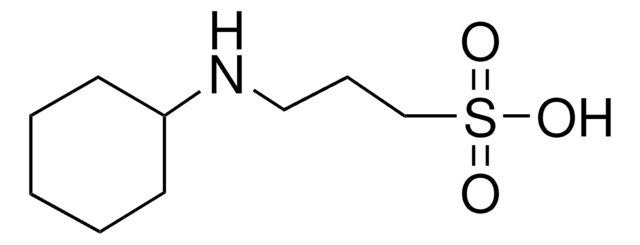B6755
BIS-TRIS propane
≥99.0% (titration)
Synonym(s):
1,3-Bis[tris(hydroxymethyl)methylamino]propane, 2,2′-(Propane-1,3-diylbis(azanediyl))bis(2-(hydroxymethyl)propane-1,3-diol)
About This Item
Recommended Products
Quality Level
Assay
≥99.0% (titration)
form
powder
storage condition
dry at room temperature
technique(s)
HPLC: suitable
color
white
useful pH range
6.3-9.5
pKa (25 °C)
(1) 6.8, (2) 9.0
mp
164-165 °C (lit.)
solubility
water: 30 % (w/w), clear, colorless
density
1.179 g/cm3 at 20—25 °C
1.189 g/cm3 at 20—25 °C
suitability
suitable for chromatography
suitable for electrophoresis buffers
application(s)
diagnostic assay manufacturing
general analytical
life science and biopharma
storage temp.
room temp
SMILES string
OCC(CO)(CO)NCCCNC(CO)(CO)CO
InChI
1S/C11H26N2O6/c14-4-10(5-15,6-16)12-2-1-3-13-11(7-17,8-18)9-19/h12-19H,1-9H2
InChI key
HHKZCCWKTZRCCL-UHFFFAOYSA-N
Looking for similar products? Visit Product Comparison Guide
General description
Furthermore, Bis-Tris Propane is a water-soluble buffer substance that plays a crucial role in enhancing the stability and activity of restriction enzymes. Specifically, its buffering capacity is advantageous for experiments that require pH levels as low as 6-7. When compared to Tris buffer, which has a poor buffering capacity below pH 7.5 and exhibits significant pKa fluctuations with temperature changes, Bis-Tris Propane proves to be a superior choice. Additionally, it finds application in conjunction with hydrochloric acid buffer to stabilize farnesyl diphosphate, particularly when isolated from Saccharomyces cerevisiae strains. Notably, it can also serve as a ligand, forming dinuclear hydroxo complexes with Lanthanides(III).
Application
- as a buffer to investigate the influence of anions with varying nucleophilic properties on the autoxidation of oxymyoglobin (MbO2).
- for purification of glucose-binding protein from membranes of Sulfolobus solfataricus.
- as a buffer during GeO2 mineralisation.
- as a buffer component in a study pertaining to environmental research
- as a buffer component to maintain optimal pH conditions during the purification and preparation of engineered enzymes
Features and Benefits
- Suitable for Biological and Biochemical Research
- Tested to confirm low levels of heavy metal contamination, ensuring suitability for various applications
- Effective Buffering from pH 6.3-9.5 (25 °C) with a pKa of 6.8 and 9.0 (25 °C)
- Highly soluble in water
Other Notes
Storage Class Code
11 - Combustible Solids
WGK
WGK 3
Flash Point(F)
Not applicable
Flash Point(C)
Not applicable
Personal Protective Equipment
Choose from one of the most recent versions:
Already Own This Product?
Find documentation for the products that you have recently purchased in the Document Library.
Customers Also Viewed
Our team of scientists has experience in all areas of research including Life Science, Material Science, Chemical Synthesis, Chromatography, Analytical and many others.
Contact Technical Service
